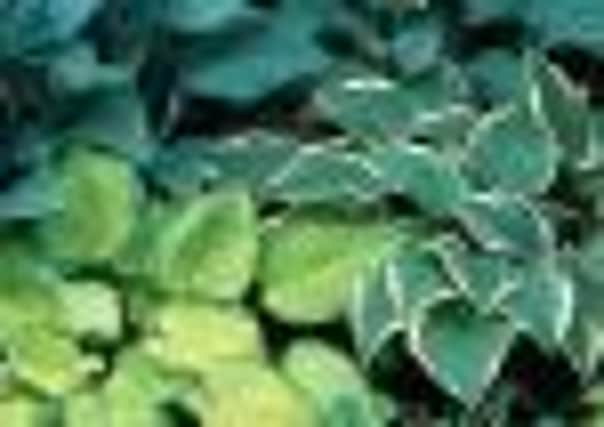Helping the hostas


They are slugs (and snails) and as the weather improves and plants start to push out fresh foliage, these prolific pests are gearing up for another year of feasting at the gardener’s expense.
And one of the prime targets of these voracious mini-beasts is the hosta, whose wonderful leafy growth begins to emerge at a time when spring bulbs are dying back.
Advertisement
Hide AdAdvertisement
Hide AdHostas are the wonders of the woodland garden, as well as being marvels in borders and beds and ideal occupants for containers.
Leaves in dense mounds is what hostas do best, and depending on variety, they could be yellow, green, grey-blue or variegated. The pattern and range of variegation, along with the range of colour, provides interest and colour to mixed borders or beds. Leaves can also be heart-shaped, or ovate.
And when you’ve had enough of the leaves, there are also flowers, which are produced mainly in summer.
So it’s easy to see why hostas are so popular with both gardeners and slugs. The former love them for their beauty; the latter adore them as a source of fresh food. As the leaves start to grow, the molluscs begin to browse. Eventually, plant foliage looks as though it’s been peppered by a 12-bore. But that shouldn’t – and doesn’t – deter people from growing these fascinating and beautiful plants.
Advertisement
Hide AdAdvertisement
Hide AdHostas are a clump-forming plant, which really helps if you want to populate an area. If you dig up established clumps, it’s possible to split them and replant the resulting halves, doubling the delight of both gardener and forager.
Hostas do well under deep-rooting trees and are perfect near water; they appreciate shade.
As perennials, they die back completely in winter, the new spear-like shoots of the tightly-rolled leaves appearing in spring, when they are at their most vulnerable from attack.
Most hostas are fully hardy. They need a reasonably fertile, moist but well-drained soil, and yet it’s important to stop them drying out. In the garden, spreading compost over the surface (mulching) in spring should do the trick. In a container, regular watering is essential. And covering the compost with a layer of sharp gravel will not only keep in moisture – it may also deter slugs.
When you grow hostas, it pays to fight back.